Woodpeckers
This page is only available for mobile

Colorful and unmistakable
Woodpeckers - carpenters of the forest
"Social housing" through woodpeckers in the forest ecosystem
Only woodpeckers are capable of making hollowed out breeding burrows in trees. They use their strong beaks as chisels; first they punch a hole and then chisel a down-directed hollow into the tree. They prefer trees with rotten trunk parts or tree species with soft wood, such as willow or poplar.
Brain work and climbing art
The "head work" does not cause any problems for the woodpecker, because its brain is fixed and its beak is flexibly connected to the skull. Their typical toe position, two forward and two backward, and their short support tail make them skillful climbers. Their extremely long tongue helps when searching for food under the bark or in the wood. With its sticky tip, they can catch prey in the smallest gaps.
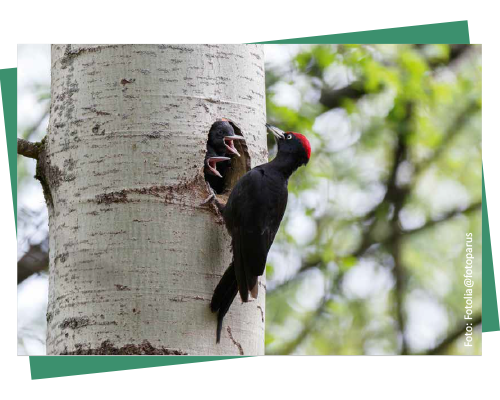
A black woodpecker brings food to its hungry chicks at the burrow entrance. This is the largest local woodpecker.
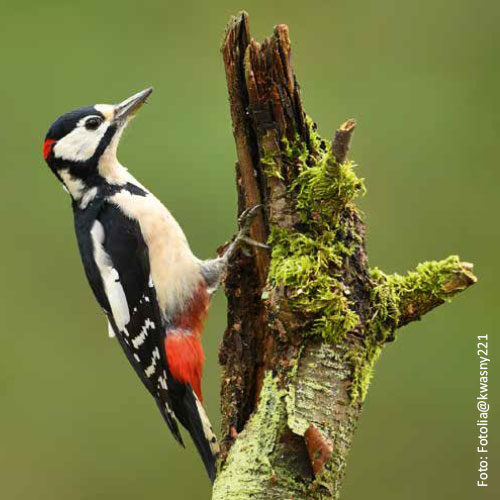
The great spotted woodpecker occurs very frequently here.
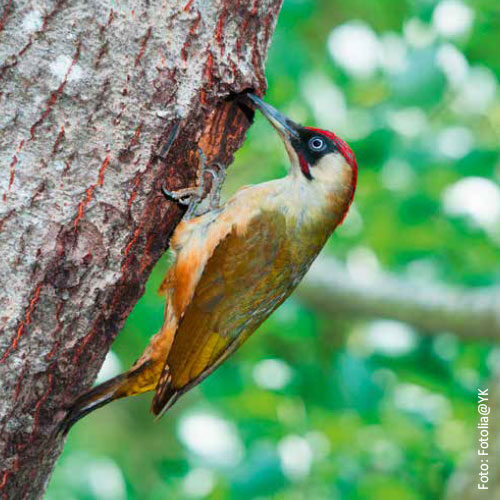
Here the European green woodpecker is looking for food. In ant nests they’re really thrilled with a mouthful of ant spawn. As an added advantage, the formic acid the ants spray as a defense repels parasites from the woodpecker’s plumage.
New tenants for woodpeckers’ tree hollows
Different sized woodpeckers build different sized breeding burrows. The enables a large variety of successor tenants. For example, owls find shelter in the spacious burrows of the black woodpecker, while starlings and tits fit much better in the smaller hollows of the great spotted woodpecker. On the other hand, the nuthatch adapts a former woodpecker hollow to fit itself by scaling down the entrance by stuffing it with clay balls. Bats often use the tree hollows as summer quarters, and hornets and wasps build their nests out of wood paper inside. Dormice also like to hibernate inside these hollows.
Squirrels also occasionally rob the nests of burrow breeders; however, they themselves don’t inhabit these hollows, but rather they live in a “drey” (a spherical structure made of branches).
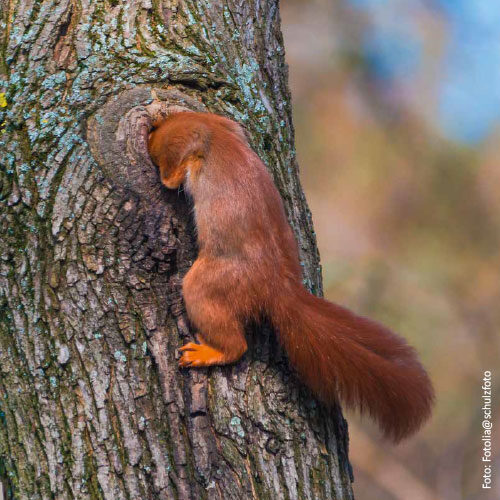

Woodpeckers are perfectly adapted to life in trees. They have a strong beak and can peck out their own tree hollows. They have strong feet and sharp claws with which they can climb well on smooth tree bark. Their short, stable tail is a good support. They also find lots of food in the trees. There are many insects and spiders under the bark and in the wood that they can collect with their long tongues.
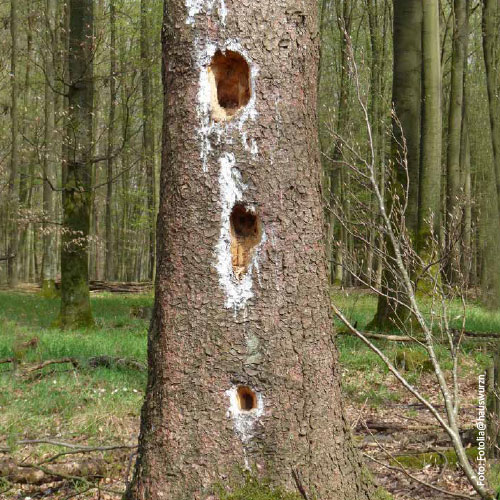
Sometimes woodpeckers build several hollows, one below the other, on a tree, forming a so-called “woodpecker flute”. However, woodpeckers can only drum well. Their singing is not very melodious.
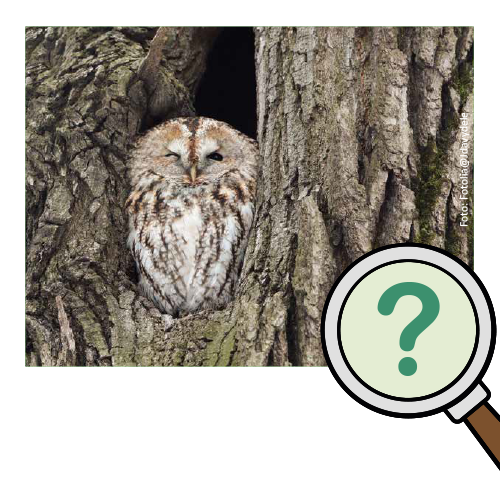
Tawny owl
The tawny owl is very loyal to a given location; it doesn't like to move. Therefore, it is very important that we permanently preserve its hollow tree.
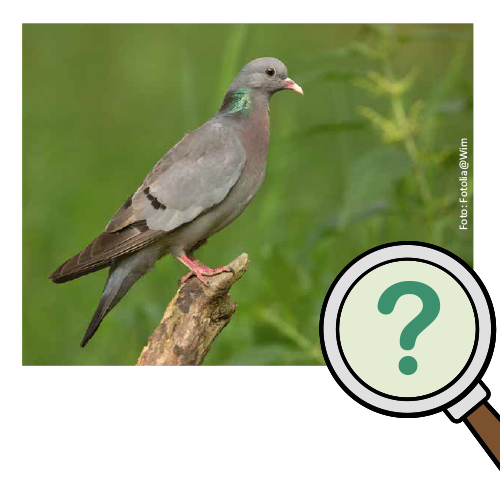
Stock dove
It needs to have former hollows of black woodpeckers for nesting. It resembles the street pigeon, but has a lower-contrast plumage and loves the forest.
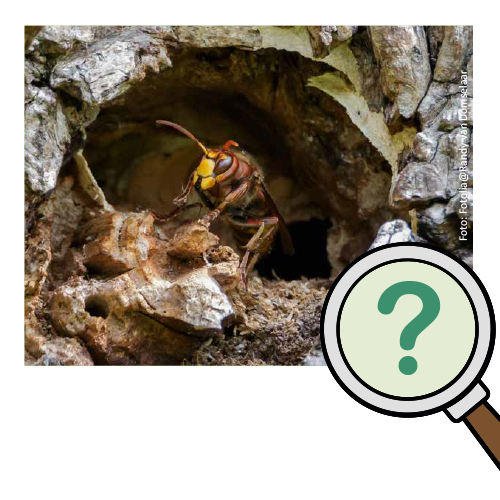
Hornet
If it does not find a tree hollow, it seeks replacements in human settlement areas and often nests behind wooden house siding.
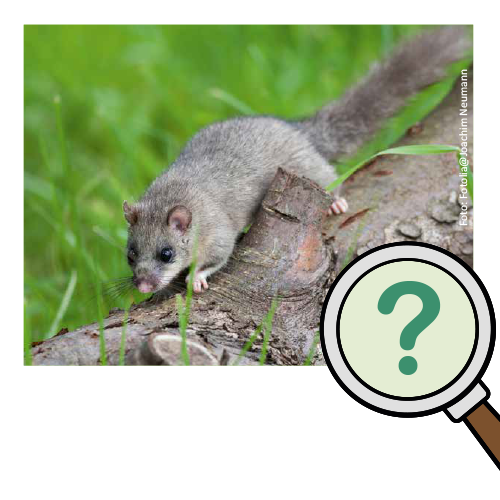
Dormouse
The dormouse is a rodent and belongs to the family of Gliridae. It is nocturnal and does hibernates for seven months (the German name translates to “seven sleeper”).
